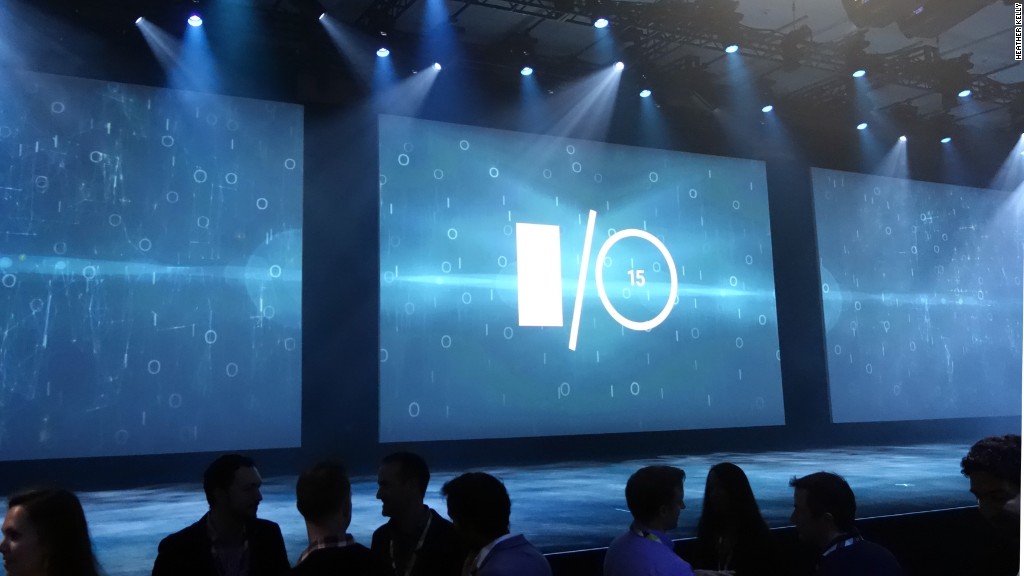
Google's low-tech virtual reality headset is switching into high gear.
It unveiled a new version of Cardboard, which launched last year, at its annual Google i/o conference on Thursday.
 |
| Google is making a 360-degree camera rig just for capturing VR videos. |
The new design is still made from cardboard, a rubber band and lenses. But now it's bigger so it can hold phones up to six inches long and it can be assembled in just three steps. You can buy it complete from a third-party for about $20
Virtual reality headsets need good VR videos. So Google is teaming up with GoPro (GPRO) on a unique 360-degree camera rig that holds 16 GoPro cameras. It will be sold by GoPro, but Google will eventually make the plans for the rig available to anyone.
A rig is part of a new set of tools from Google called Jump for creating and sharing VR content. Once you've recorded a scene, the Jump assembler software turns all those slivers of video footage into immersive high-definition VR content that also shifts to appear 3D. Jump will be available to some users later this summer.
"Cardboard is about VR for absolutely everyone," said Clay Bavor, Google's vice president of product management.
That means Apple (AAPL) users too. Google announced it's opening the Cardboard software development kit to iOS developers.
Related: GoPro unveils virtual reality camera
Cardboard's already being used for things like campus tours and art projects. Google Expeditions is a program that includes a box of Cardboard, phones, and a teacher tablet to a classroom. Students can go on virtual field trips together, visiting locations like the Great Wall of China, diving deep underwater, or going back in time for a history lesson. Google says hundreds of classrooms have already taken part in the project, and new teachers can sign up online to learn more about the program.
What started as a fun side project for some Google employees is now the company's best bet for a viable virtual reality product. There are more than 1 million Cardboard viewers in the wild now, according to Bavor.
Google (GOOG) recently made Jon Wiley, the lead Google Search designer, the principal designer of Google Cardboard. And YouTube has started supporting 360-degree videos.
Related: Want an Oculus? It's gonna cost you
Its inexpensive, DIY approach is a bold alternative to the other high-end virtual reality products in the works. Facebook bought Oculus Rift and plans to release a headset for consumers in early 2016 with a pricetag of around $1,500.
Sony is working on Project Morpheus, a fully immersive headset for gamers. And Microsoft is enthusiastically pushing HoloLens, it's augmented reality headset that mixes 3D images with the real word.
Though the quality of Cardboard is a step down from hardware like the Oculus, Google has access to a huge audience of consumers and developers, and a sweet price tag.

